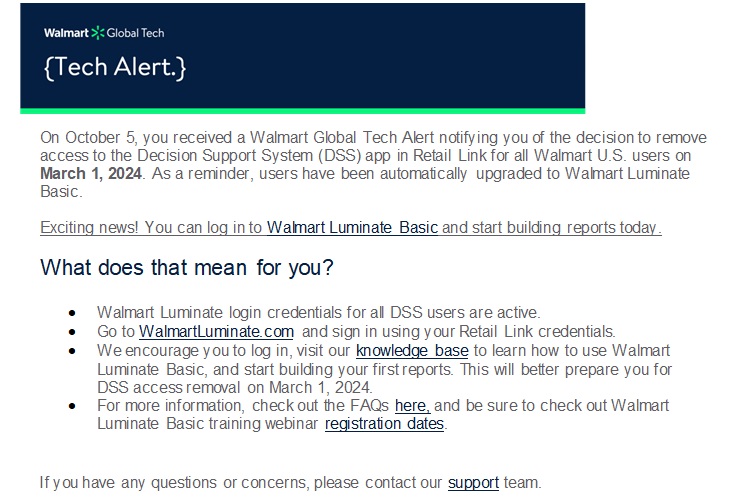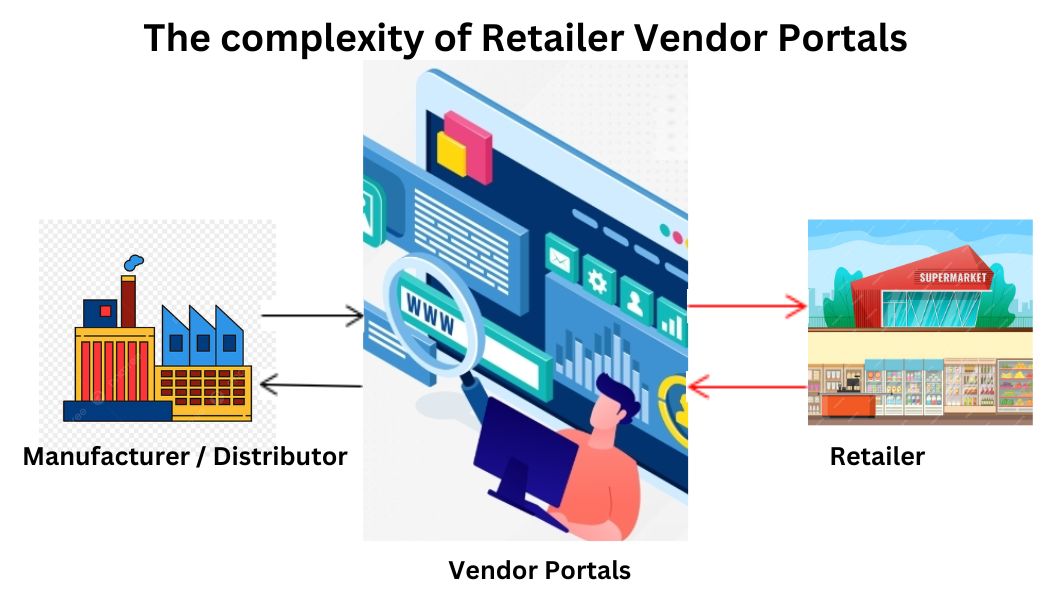In a recent article we explored the growing complexity of retailer portal management. These digital platforms serve as a bridge between retailers and suppliers, facilitating a range of activities from order management to product listings and compliance. However, the complexity and diversity of these portals pose significant challenges for suppliers, particularly in terms of standardization and efficient management. This article provides an in-depth look at supplier portals in big retailers, highlighting their importance, challenges, and strategies for effective management.
Understanding Supplier Portals
Supplier portals are online platforms that retail chains use to manage their relationships with vendors. These portals provide a centralized location for suppliers to access information, submit invoices, managing orders, and comply with retailer requirements. They are designed to improve communication, reduce errors, and increase efficiency in the supply chain.
The Importance of Portals
Portals are becoming essential for retail chains to managie a large and diverse base of vendors. They enable retailers to:
- Streamline order processing and fulfillment.
- Ensure compliance with standards and regulations.
- Monitor supplier performance and manage risk.
- Facilitate communication and collaboration with suppliers.
For suppliers, these portals offer:
- The possibility to sell I this important channel
- Direct access to retailer requirements and guidelines.
- Real-time updates on order status and inventory needs.
- Participate on bids.
- Opportunities to showcase products and participate in promotions.
Different Types of Supplier Portals
To complicate things, big retail chains often utilize a variety of portals, each serving a specific function in the vendor management process. Some of the more common are:
Vendor Portals: These portals are used for overall vendor management, including registration, onboarding, and performance tracking. They often serve as the primary interface for suppliers to interact with the retailer.
Item Portals: They focus on product management and allow suppliers to list new products, update product information, manage product catalogs, and mange temporary price reduction offers (TPR).
Cost and Invoice Portals: These portals are dedicated to financial transactions, enabling suppliers to submit invoices, track payments, and manage pricing agreements.
Certification Portals: Retailers use these portals to manage compliance and certification requirements, allowing suppliers to submit relevant documentation and track their certification status.
Challenges and Complexities
Despite their benefits, supplier portals present several challenges for both retailers and suppliers:
Lack of Standardization: Each big retail chain often has its own unique portal with different requirements, formats, and functionalities. This lack of standardization makes it difficult for suppliers to manage their operations efficiently across multiple retailers.
Integration Issues: Suppliers must integrate their systems with each retailer’s portal, which can be a complex and resource-intensive process, especially for smaller vendors.
Data Management: The need to maintain accurate and up-to-date information across multiple portals can be daunting. Errors or inconsistencies can lead to delays, penalties, or even loss of business.
Training and Adaptation: Retailers are constantly changing and updating their portals. This is an example.

Suppliers must continually train their staff to use different portals effectively and cope with their changes, which can be time-consuming and costly.
Best Practices for Navigating the Portals
To overcome these challenges, suppliers can adopt several strategies:
Centralize Data Management: Use a central system to manage product information and orders, ensuring consistency across all portals.
Automate Processes: Implement automation tools to streamline data entry, order processing, and compliance checks.
Retain specialized companies: Managing multiple retailers with multiple portals require dedicated resource with specialized knowledge, which translates into higher payroll. Outsourcing portal management is becoming the best alternative in terms of cost and time.
Collaborate with Retailers: Work closely with retail partners to understand their needs and provide feedback on portal functionalities and improvements.
Leverage Analytics: Use data analytics to monitor performance, identify trends, and make informed decisions.
Conclusion
Supplier portals are vital components of the modern retail ecosystem, offering numerous benefits for both retailers and suppliers. However, navigating the complexities of these portals requires a strategic approach, focusing on standardization, integration, and efficient data management. Promoting USA has specialized in portal management in the main retailers, saving our customers time to get results and the cost of hiring expensive resources. If you have any specific areas you would like to explore further or any questions, give us your information to schedule a meeting.
I hope this article has been helpful. I will continue to post information related to trade channel management, general economy and market trends. If you are interested in this article or want to learn more about Promoting USA, please subscribe to stay updated on future articles.

